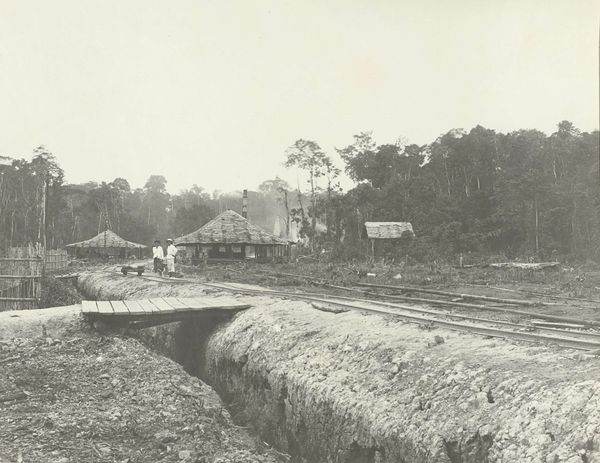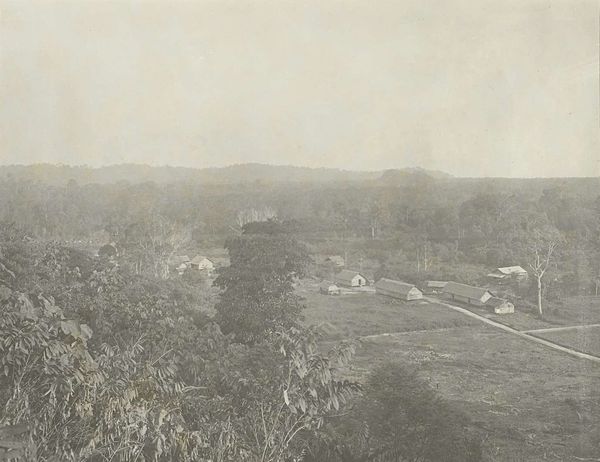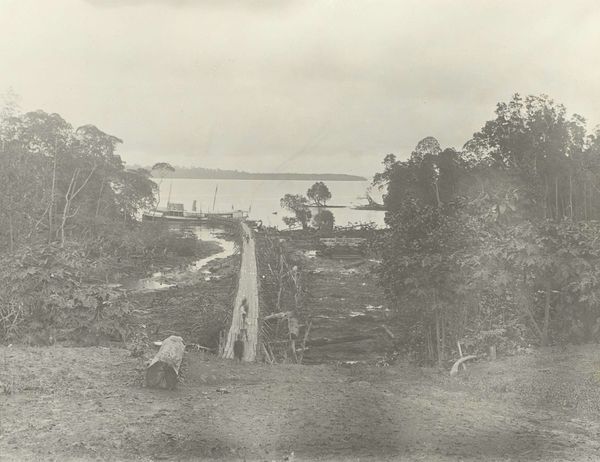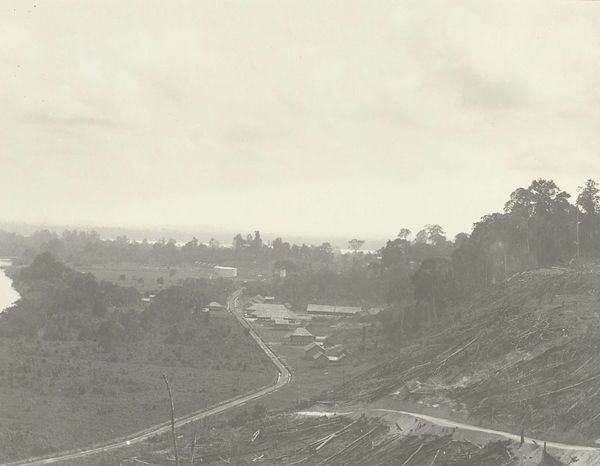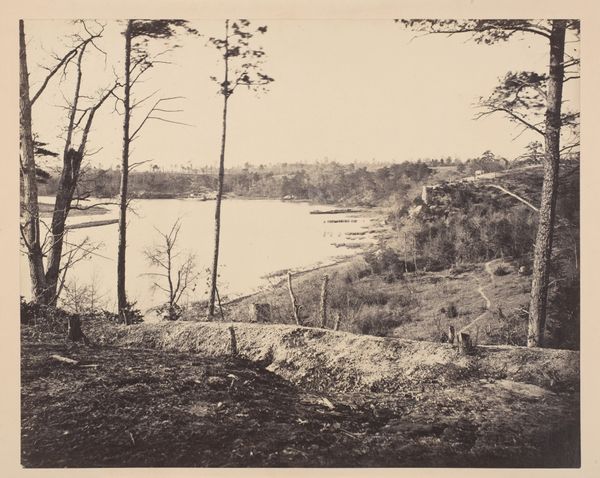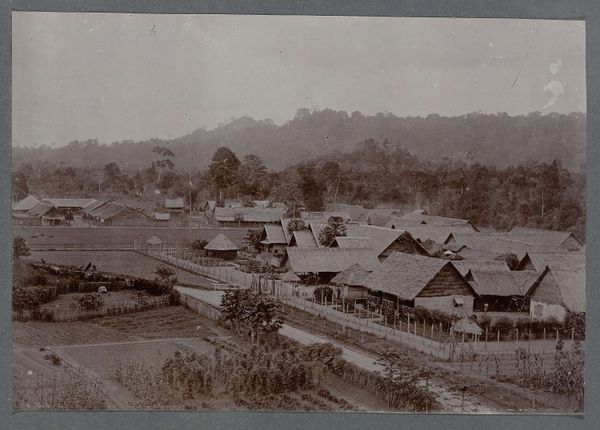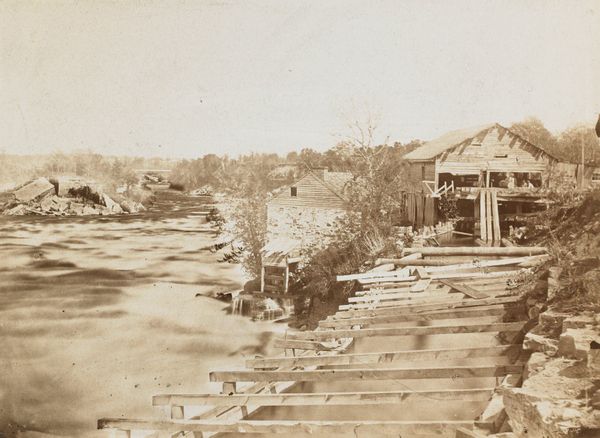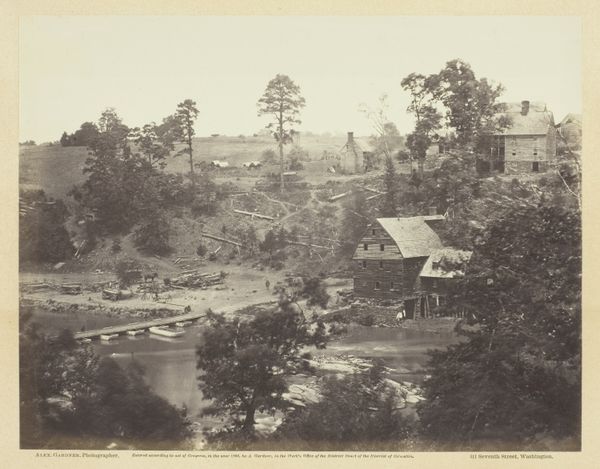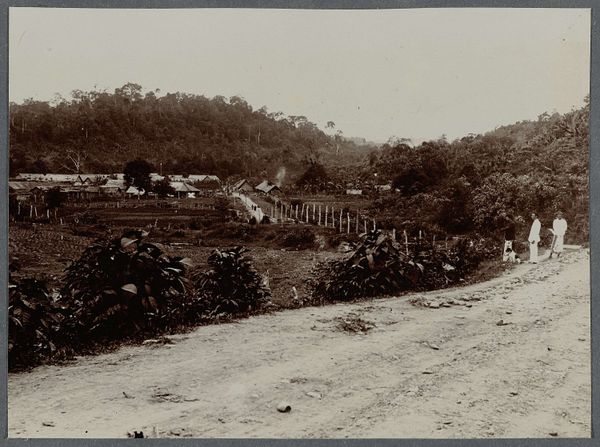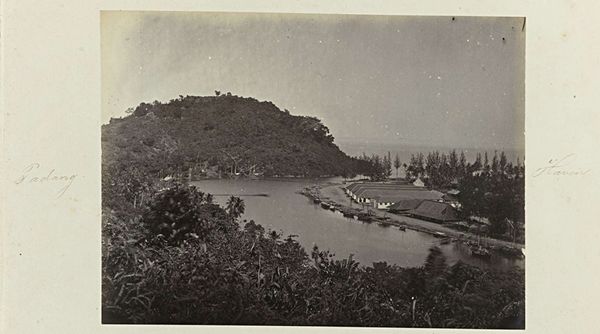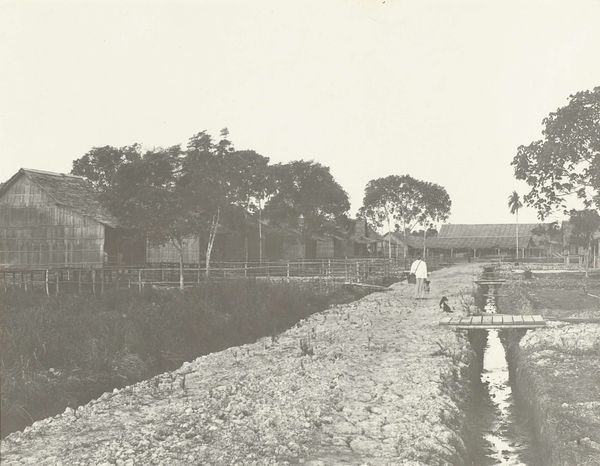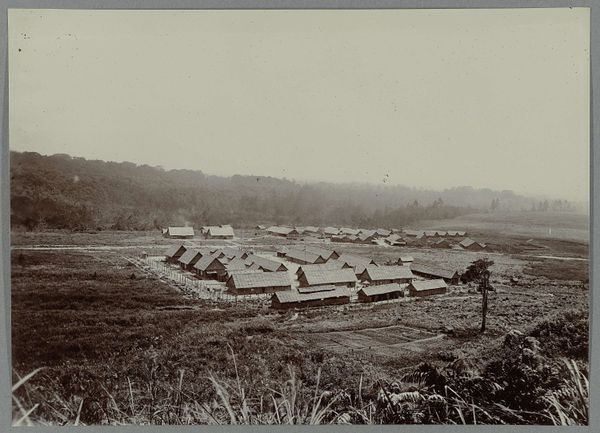
print, photography
# print
#
landscape
#
charcoal drawing
#
photography
#
realism
#
monochrome
Dimensions: height 215 mm, width 280 mm, height 385 mm, width 440 mm
Copyright: Rijks Museum: Open Domain
Curator: Let's examine this compelling photogravure from the early 1900s, titled "Terrein met gerooide bomen," which translates to "Land with Uprooted Trees." Editor: My first impression is one of starkness. The monochrome tones cast a somber mood, and the cleared land is quite visually striking in contrast to the natural river valley. Curator: Exactly. The composition invites us to consider the human impact on the landscape, something all too prescient even back then. This was a period marked by colonial resource extraction; such deforestation directly impacted indigenous populations. This visual portrayal mirrors the widespread dispossession experienced across continents. Editor: That’s precisely what grabs me. We see clear evidence of heavy modification of the physical environment. Look at the remaining logs scattered around the few existing buildings. We should also talk about the work involved to accomplish deforestation on this scale. What specific types of laborers were employed in clearing the land? Who owned these felled trees? Curator: Indeed. Moreover, it highlights themes of exploitation, class structures and colonial labor practices prevalent in early twentieth century economic landscapes. The clearing away of old trees mirrors colonial destruction, revealing the underlying social structure beneath. The remnants left expose not only ecological decimation, but the unacknowledged labor on which colonialism thrived. Editor: And looking at the photographic medium itself, the photogravure print seems intentionally chosen, given its ability to record the very tangible impact on terrain. It serves as both an aesthetic documentation and a material witness. Curator: Precisely. This approach subtly highlights not just ecological, but structural degradation and social decay stemming from systemic oppression, revealing layers of injustice beneath apparently beautiful surface-level art. Editor: I leave considering not merely deforestation, but a critical examination of capitalism and how it manipulates both land and lives. It makes me want to explore all other documentation connected with this site during the same time. Curator: I depart reflecting upon intersectional ecological and social implications as our art historical insights intertwine with theoretical contemplation on matters relating identity, resource access, as well as intersectionality overall.
Comments
No comments
Be the first to comment and join the conversation on the ultimate creative platform.
